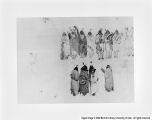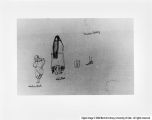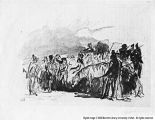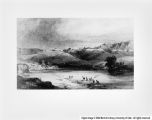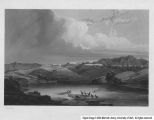| OCR Text |
Show 143 close comparisons between the watercolors and the aquatint images were made. Image changes were compared and weighed against available ethnological information; the resulting composite was then placed within its historical and art historical contexts. However, in interpreting this reconstruction, it must be understood that the artist did not transcribe the events he had witnessed. Bodmer could only translate the actual event into the language of his medium. The examination of Tableau 27, Scalp Dance of the Minataries revealed the care Bodmer had taken to include all of the primary information of the watercolors of this dance. Yet, the completed aquatint was different. Certainly, it differed from the watercolors; it also differed from the event itself. Further, it is not enough to say that the watercolors, as primary documents, repeat or reconstruct the actual event, for the watercolors are also art. It was this issue that emerged in chapter three, through the examination of Vignette 26, The Travellers Meeting. Since their rediscovery in the 1950s, Bodmer's American watercolors have become the primary documentation of Maximilian's expedition. As documentary reliance has been placed upon them, the aquatints, now more easily recognized as artistic reconstruction, have slipped further and further into the background. This trend is not without danger, as neither the aquatints nor the watercolors can be accepted at face value. Although functioning as documents, the watercolors too are primarily works of art and, as such, can only translate actual occurrences; they can never duplicate them. Particular facts gleaned from either the watercolors or the aquatints can only be depended upon, when the distinct nature of each |
















































